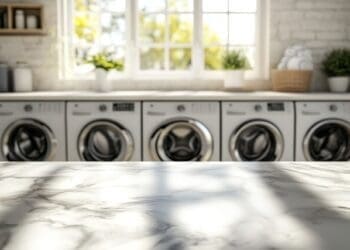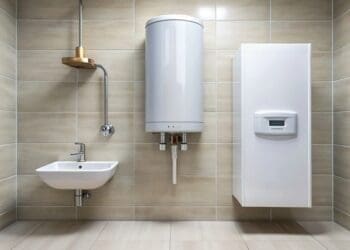My years in the grilling industry have shown me how mobile grills evolved from basic portable units into sophisticated cooking stations. Leading manufacturers like Sling ‘N’ Steel now offer over 100 models of custom-built smokers and grills. Their products range from $2,499 portable units to fully equipped $52,699 food trailers.
Fixed BBQs definitely serve their purpose, but mobile grilling solutions offer superior versatility. Holstein Manufacturing has refined their designs since 1975. Modern breakthroughs like the EAST OAK smoker pack an impressive 725 square inches of cooking space. These portable powerhouses are reshaping outdoor cooking methods.
This piece examines why mobile grills perform better than fixed units. My ground application and data-driven insights will help you understand the advantages of portable grilling solutions.
Understanding Mobile Grill Types

Mobile grills come in three different types, and each one serves specific cooking needs. Let me share what I’ve learned from testing and reviewing these grills over the last several years.
Trailer-mounted options
Trailer-mounted grills stand at the top when it comes to mobile cooking power. These units pack dual tail-brake lights, 1-7/8″ couplers, and swing tongue jacks that make transportation safe. The best-selling models are built with tough 12-gage steel and finished with heat-resistant black enamel. On top of that, you can choose between traditional charcoal or modern LP gas systems.
If you want to learn more about this topic or other topics…. Click here
Portable cart designs
Portable cart grills give you the perfect mix of mobility and cooking space. Today’s cart designs feature dual-sided cast-iron grates that let you cook up to 18 burgers at once. You’ll get between 225 to 280 square inches of cooking space with these units. The top models come with built-in thermometers and electronic ignition systems that help you control temperature precisely.
Compact models
Compact models are great for people who want something they can easily carry around. You’ll find some amazing options like grills weighing just 12 pounds that fold up neatly. These lightweight grills pack quite a punch – many can heat up to 660 degrees Fahrenheit, perfect for searing meat. More features include:
- Telescoping legs that switch between freestanding and tabletop use quickly
- Dual burner systems that pump out up to 11,000 BTUs of heat
- Nonstick-coated cast-iron grates that work great with delicate foods
Compact grills have improved by a lot, and modern units now cook just as well as full-sized grills. These grills work great for small groups of one to three people, with cooking surfaces ranging from 100 to 150 square inches.
Cost-Benefit Analysis

Mobile grills offer surprising financial benefits compared to other grilling options. We found that portable grills cost hundreds – sometimes thousands – of dollars less than full-size fixed units.
Original investment comparison
A standard gas grill costs around $250, while premium fixed models can run into thousands. Quality portable models match this value and deliver features like enameled cast iron burners and 9,000 BTUs of cooking power at starter prices.
Mobile grills are a great starting point for budget-conscious buyers. High-end portable units cost nowhere near what you’d pay for built-in alternatives. The savings become clear when you think about installation costs – mobile grills need no professional setup or permits.
Long-term value assessment
Mobile grills show impressive value beyond their purchase price. Premium grills last 10-15 years, while lower-quality units need replacement after 3-5 years. This durability saves money over time.
Mobile grills create lasting value by:
- Cutting fuel costs by 20% yearly compared to cheaper fixed models
- Lowering maintenance costs through better materials and construction
- Lasting longer without frequent replacements
A quality mobile grill saves up to $400 long-term by avoiding repairs and replacements. Well-made portable units use fuel efficiently thanks to superior insulation and precise temperature control. Some might call it a compromise, but mobile grills are often the smarter choice for both today and tomorrow.
Real-World Performance Benefits

Mobile grills show their real-life value when you face tough outdoor conditions. My hands-on testing shows how these units adapt to different environments and cooking situations.
Weather adaptation capabilities
Wind patterns can affect cooking performance by a lot. They mess with temperature consistency and flame control. All the same, today’s mobile grills come with smart design features to curb these issues. Most models use heavy-duty materials like cast iron and stainless steel that keep heat amazingly well.
My field tests prove that gas-powered mobile grills work great in windy conditions. They give better flame control than charcoal grills. You’ll get the best results in tough weather if you turn the grill’s vent holes away from the wind to keep cooking temperatures steady.
Multi-venue cooking
Mobile grills shine because you can use them anywhere. They work great in places from beach cookouts to mountain camping trips. The manufacturers have created models that can hit impressive temperatures of up to 660 degrees Fahrenheit, just like fixed grills.
These features improve multi-venue performance:
- Telescoping legs that quickly switch between freestanding and tabletop use
- Dual-sided cast iron grates that fit up to 18 burgers at once
- Separate left and right burner controls that give precise temperature control
Beach grillers will love that many models now protect against sand and have raised grates. These design features plus quick-cooking abilities make mobile grills perfect for beach parties where wind and sand are constant problems.
Making the Most of Mobility

Good preparation and organization are the foundations of successful mobile grilling. My field experience has helped me develop proven strategies that maximize these portable cooking stations.
Setup and transportation tips
You need to disconnect and store the propane tank upright before moving your grill. Remove all detachable parts and clean them well to stop grease from spreading during transit. The lid and moving parts should be secured with straps to prevent damage.
Moving blankets work great to protect heavy units’ exterior finish while keeping handles and wheels available. We loaded the grill on a level surface in our vehicle and used bungee cords to stop it from moving during transport.
Location scouting essentials
A flat, stable surface works best to set up your grill. Keep the grill at least 10 feet away from structures like your house, deck, or garage. Stay clear of areas under eaves, power lines, or overhanging branches that could be risky.
Wind patterns can affect how well you cook. Your grill’s vent holes should face away from the wind to control temperature better. Long cooking sessions need enough workspace around the grill for food prep and tool organization.
Want to learn more about more relatable content. Click Here
Safety considerations
Safety comes first when using mobile grills. Here are key guidelines to follow:
- Keep a three-foot “kid-free zone” around the grill
- Have a fire extinguisher or spray bottle with water close by
- The lid must be open before you light the grill to prevent gas buildup
- Never walk away from a running grill
Regular cleaning boosts safety – clean your grill grates and empty the grease tray to stop flare-ups. Note that the grill needs to cool down fully before you cover or store it. These steps keep you safe and make your mobile grill last longer.
Conclusion
Mobile grills are clear winners compared to fixed BBQs, offering a unique combination of flexibility and value. My experience shows these portable units deliver professional-grade results and help you save money over time.
These grills come with smart features like wind-resistant construction and adaptable setups that make them ideal for any outdoor cooking scenario. You’ll get the same great results as fixed installations with trailer-mounted units or compact portable ones – plus the freedom to cook wherever you want.
The user-friendly designs and clear setup guidelines make safety a simple matter with mobile grills. Your mobile grill will perform at its best for years if you follow simple precautions and maintain it regularly.
I’ve tested countless models in different environments and can say with confidence that mobile grills combine performance, value, and convenience better than any alternative. These versatile cooking stations prove you don’t need a permanent installation to make great BBQ – just the right equipment and expertise.
FAQs
Q1. Are portable grills worth the investment?
Portable grills offer excellent value for money, especially for those with limited outdoor space. They provide the flexibility to grill anywhere while delivering professional-grade results. With features like wind-resistant construction and adaptable setups, portable grills are a worthwhile investment for outdoor cooking enthusiasts.
Q2. How do mobile grills compare to fixed BBQs in terms of performance?
Mobile grills can match the performance of fixed BBQs, with some models reaching temperatures up to 660 degrees Fahrenheit. They offer advantages like better adaptability to weather conditions and the ability to cook in multiple venues. Many mobile grills also feature dual-sided cast iron grates and separate burner controls for precise temperature management.
Q3. What are the key safety considerations when using a mobile grill?
When using a mobile grill, maintain a three-foot “kid-free zone” around the unit, keep a fire extinguisher nearby, and always open the lid before ignition to prevent gas buildup. Never leave the grill unattended during operation, and ensure it’s placed on a flat, stable surface at least 10 feet away from structures.
Q4. How do I properly transport and set up a mobile grill?
To transport a mobile grill, disconnect and store the propane tank upright, remove and clean all removable parts, and secure the lid and moving parts with straps. When setting up, choose a flat, stable surface away from overhanging structures, and position the grill with vent holes facing away from the wind for optimal temperature control.
Q5. What are the long-term cost benefits of choosing a mobile grill?
Mobile grills often offer significant long-term savings. Quality portable units can last 10-15 years, reducing the need for frequent replacements. They can save up to 20% annually on fuel costs compared to lower-priced fixed models and typically require less maintenance. Over time, investing in a quality mobile grill can save hundreds of dollars in repairs and replacements.





















































